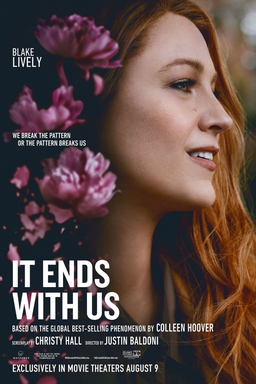
It Ends With Us: A Raw Look at Domestic Violence, Healing, and Breaking the Cycle
Directed by Justin Baldoni and based on Colleen Hoover’s best-selling novel, It Ends With Us is far more than a typical romantic drama—it’s a courageous exploration of domestic violence, cycles of abuse, and the strength it takes to break free.
Unpacking the Cycle of Abuse: When Love and Fear Coexist
The film follows Lily Bloom (Blake Lively), an aspiring florist who falls in love with Ryle Kincaid (Justin Baldoni), a man who seems perfect—until he isn’t. It captures the heartbreaking reality of abuse: violent outbursts followed by sincere apologies, gaslighting, and manipulation that blur the line between love and harm. The phrase “hurt people, hurt people” encapsulates this complex dynamic, showing how victims often feel complicit or confused about their reality.
The Shadow of Intergenerational Trauma: Can We Escape the Past?
It Ends With Us reveals how trauma can be passed from one generation to the next. Both Lily and Ryle carry scars from their childhoods that shape their present struggles. Lily’s powerful declaration, “It ends with us,” symbolizes the hope of breaking this cycle of trauma, emphasizing that healing takes conscious effort, therapy, and support.
Complex Emotions in Abusive Relationships: Why Can’t I Just Leave?
The film portrays the tangled emotions victims face—love mixed with fear, guilt, and confusion. It challenges the misconception that leaving is easy, urging society to respond with empathy rather than judgment. Victims aren’t weak; they’re human beings navigating a painful maze, often in silence.
The Role of Support Systems: Who Do You Turn to When You Can’t Turn to Yourself?
Isolation is a tool of abuse, but Lily’s story highlights the importance of a strong support network. Her best friend, who is also Ryle’s sister, exemplifies how loved ones can provide crucial support, helping victims find the strength to leave.
Breaking the Cycle of Destruction: Healing Is a Collective Responsibility
Ryle’s violence stems from unhealed trauma, underscoring the importance of mental health care, early intervention, and accessible support systems. Healing is not just individual—it affects families and communities. People can choose a different path, no matter their past.
Healing as a Journey, Not a Destination
The film shows that healing requires confronting deep emotional wounds and making difficult choices. Lily’s decision to leave, despite still loving Ryle, is a profound act of courage aimed at protecting her daughter and breaking the cycle of abuse for good.
Empathy at the Heart of Healing: Understanding Without Excusing
It Ends With Us asks us to reflect on where abuse originates and how to foster self-awareness and change. It offers no simple solutions but encourages compassion, understanding, and commitment to healing—both personally and collectively.
The film is a mirror to society, urging us to acknowledge and challenge the norms that allow abuse to continue. When Lily asks Ryle for a divorce, the audience cheers—not just for her, but for independence, healing, and the end of intergenerational trauma.
If you or someone you know is experiencing abuse, remember—you’re not alone. iDare provides affordable, inclusive support. Reach out and take the first step toward healing. ❤️
Like our content? Please support us by sharing and up-voting!
Image Credits: Wikipedia
